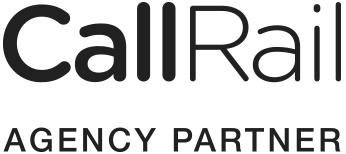Having a website with optimized pages is essential for any business or individual looking to establish an online presence. However, even with the best intentions and efforts, URL problems can arise, preventing users from accessing your site and hindering your search engine rankings.
Some of the most common URL problems include invalid URLs, missing pages, and crawl errors. In this article, solutions for these issues will be provided to help ensure that your site is accessible to users and visible in search results.
1. Invalid or Bad URLs
What Does “Bad URL” Mean?
A bad URL or an invalid URL is a URL that contains symbols, spaces, or structures that Google cannot process. These characters and structures include spaces, backslashes, and relative URLs like “/contact.html” instead of the complete URL, such as “https://site.com/contact.html.”
How to Fix an Invalid URL
If any of the URLs contain the characters or structures mentioned above, replace them with the following solutions:
- Spaces: Use “%20” instead of the space.
- Backslashes: Use forward slashes (“/”) instead.
- Relative URLs: Use the complete URL, starting with “http://”.
Fixing an invalid URL is a simple process that can be done quickly. It is important to resolve this issue because it can prohibit Google from processing the URL. By following the solutions mentioned above, one can easily fix the invalid URL and ensure that Google can process it.
2. Missing Pages
404 Errors (Not Found)
When a user clicks on a link that leads to a page that doesn’t exist, a 404 error occurs. This can be frustrating for the user. To solve this issue, there are a few options available:
- Customizing the 404 error page: By creating a custom 404 error page, the user can be directed to another page that may be helpful to them. This can improve the user experience.
- Adding a 301 redirect: If the original page no longer exists but there is a similar page that can be used instead, a 301 redirect can be set up to take the user to the new page.
- Checking for accurate links: Sometimes, typos or incorrect links can cause a 404 error. By double-checking the sitemap and internal links, the accuracy of the links can be ensured.
Soft 404 Errors
A soft 404 error occurs when a page returns a successful 200 status code but doesn’t actually exist. This can also happen when a page has very little or no content. To fix this issue, there are a few options:
- Adding unique content: If the page has very little content, adding more unique content can help solve the issue. If there is not enough content, merging it with another page can be a solution.
- Setting up a 301 redirect: If there is a similar page that can be used instead, setting up a 301 redirect can be an option.
- Configuring a 404 or 410 response: By configuring a 404 or 410 response, the user can be directed to a helpful page instead.
- Marking the URL as noindex: This option can be used if the page is not important and doesn’t need to be indexed by search engines.
3. Crawl Errors
When search engines crawl a website, they must be able to access all pages in order to index them and display them in search results. However, sometimes crawl errors can occur, preventing search engines from accessing certain pages. These errors can be either site-wide server errors or URL errors that affect the site’s SEO and user experience.
Access Denied
One common URL error that can occur is an access denied error. This can happen if a page is gated behind a login or if the robots.txt file blocks the page. If a user receives an access denied error message for a URL they want to appear in search engines, they should first check to make sure the page does not require a login to access it. Next, they should ensure that the URL is not listed in the robots.txt file.
Broken Redirects and Redirect Loops
Another common crawl error is a broken redirect or redirect loop. These errors can prevent search engines from following a URL to its intended destination. A redirect loop occurs when a page redirects a URL back to the initial page, creating an endless loop.
To fix these URL problems, users should ensure that any redirects they have set up point to the correct page and that the redirected URL is valid and contains no typos or invalid characters. If a redirect loop is detected, users can either remove the redirects or set up a new redirect to the proper page using their .htaccess file.
By addressing these common crawl errors, users can ensure that their site is fully crawled and indexed by search engines, improving their site’s visibility and user experience.
Don’t let URL problems hurt your site’s SEO
Some URL errors can prevent important pages from appearing in search results, hurting your site’s SEO. Fix these issues to ensure search engines and users can access your pages.
Frequently Asked Questions
How to Troubleshoot URL Problems on a Website?
If you are experiencing URL problems on your website, you can troubleshoot them by following these steps:
- Check if the URL is correct and properly formatted.
- Check if the URL is case-sensitive.
- Check if the URL is broken or has any typos.
- Check if the URL is blocked by the website’s robots.txt file.
- Check if the URL is redirected to another page.
What are Some Common URL Issues and How to Fix Them?
Some of the common URL issues and their solutions are as follows:
- Broken links: Remove or update the broken links.
- Duplicate content: Use canonical tags to indicate the original content.
- Incorrect URL format: Correct the URL format and use hyphens instead of underscores.
- Case sensitivity: Use lowercase letters in URLs to avoid case-sensitivity issues.
- Redirect chains: Use a single redirect instead of multiple redirects.
Are There Any Online Tools to Help Me Fix Invalid URLs?
Yes, there are several online tools available to help you fix invalid URLs, such as:
- Google Search Console
- Screaming Frog SEO Spider
- Moz Pro
- Ahrefs Site Explorer
- SEMrush
What are the Most Common Causes of Invalid URLs?
The most common causes of invalid URLs are:
- Broken links
- Duplicate content
- Incorrect URL format
- Case sensitivity
- Redirect chains
How to Check for Website Issues Related to URLs?
To check for website issues related to URLs, you can use the following tools:
- Google Search Console
- Bing Webmaster Tools
- Screaming Frog SEO Spider
- Moz Pro
- Ahrefs Site Explorer
- SEMrush
What Does an Invalid URL Error Code Indicate?
An invalid URL error code indicates that the URL is not valid or does not exist. The most common error codes are:
- 404 Not Found: The requested URL does not exist on the server.
- 410 Gone: The requested URL is no longer available on the server.
- 301 Moved Permanently: The requested URL has been permanently moved to a new location.
- 302 Found: The requested URL has been temporarily moved to a new location.
Conclusion
In conclusion, common URL problems can be a headache for website owners and marketers. Technical SEO issues and errors can result in poor user experience, lower search engine rankings, and ultimately, lost revenue. However, with the help of Milia Marketing, website owners can tackle these issues head-on and improve their website’s overall performance.
Milia Marketing provides comprehensive solutions for technical SEO issues, including website audits, on-page optimization, and link building. With Milia Marketing’s expertise and experience, website owners can rest assured that their website is in good hands. Book a discovery call to discuss further!











